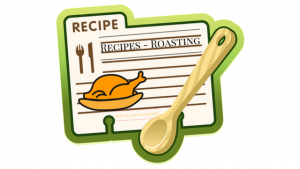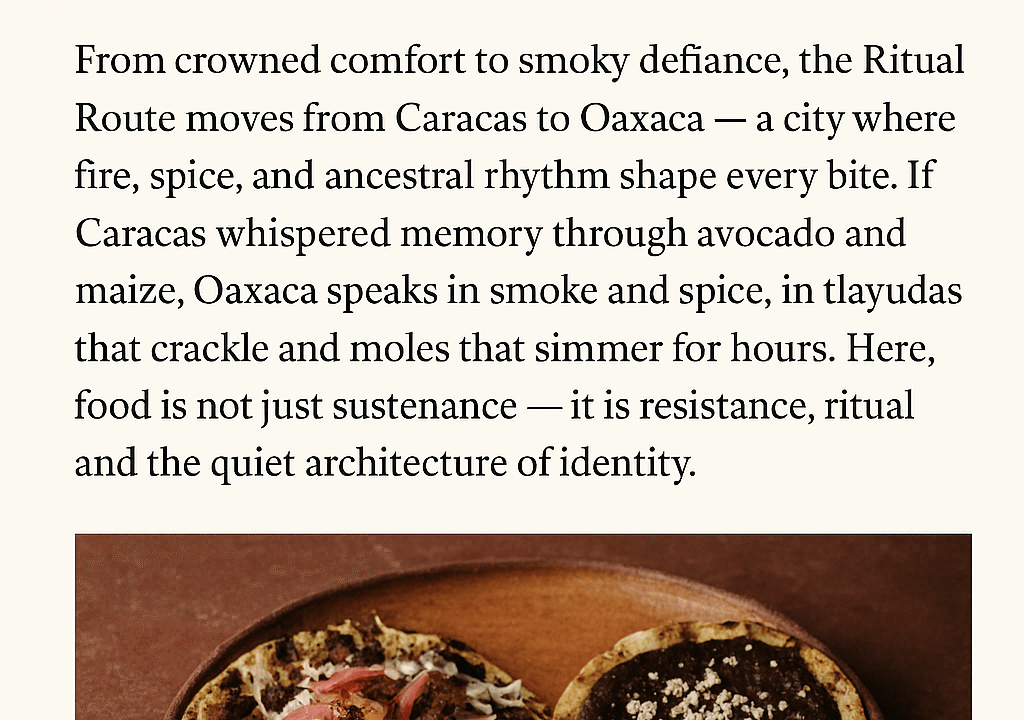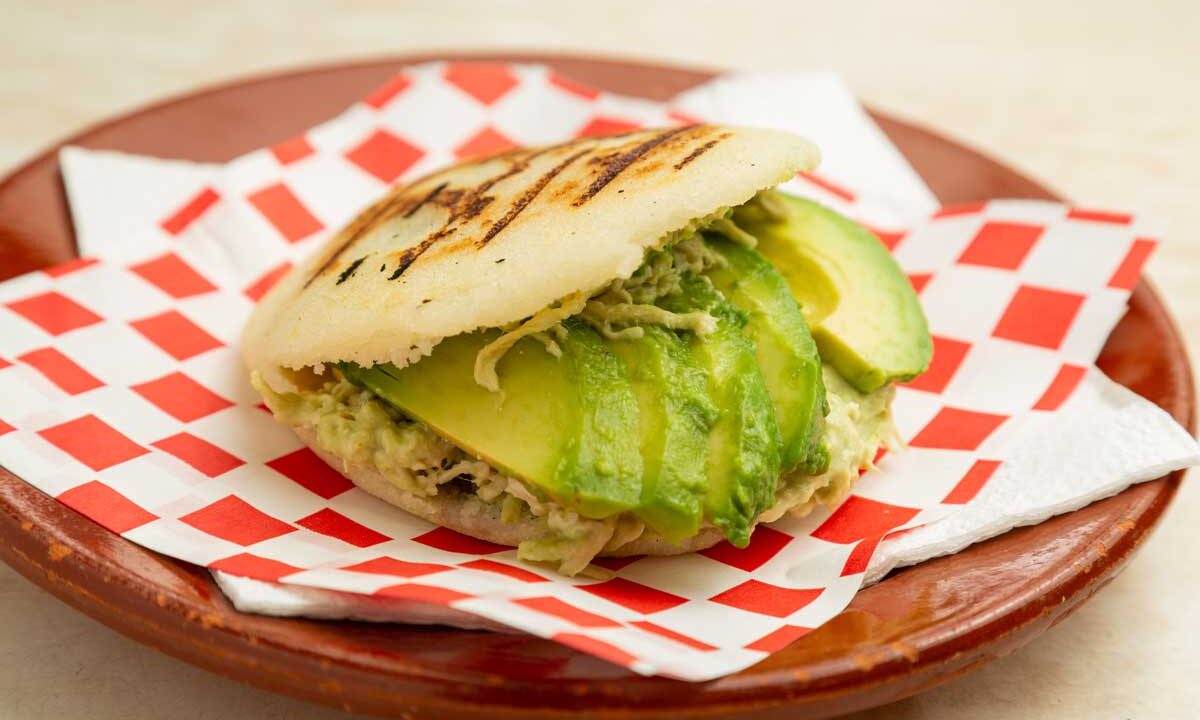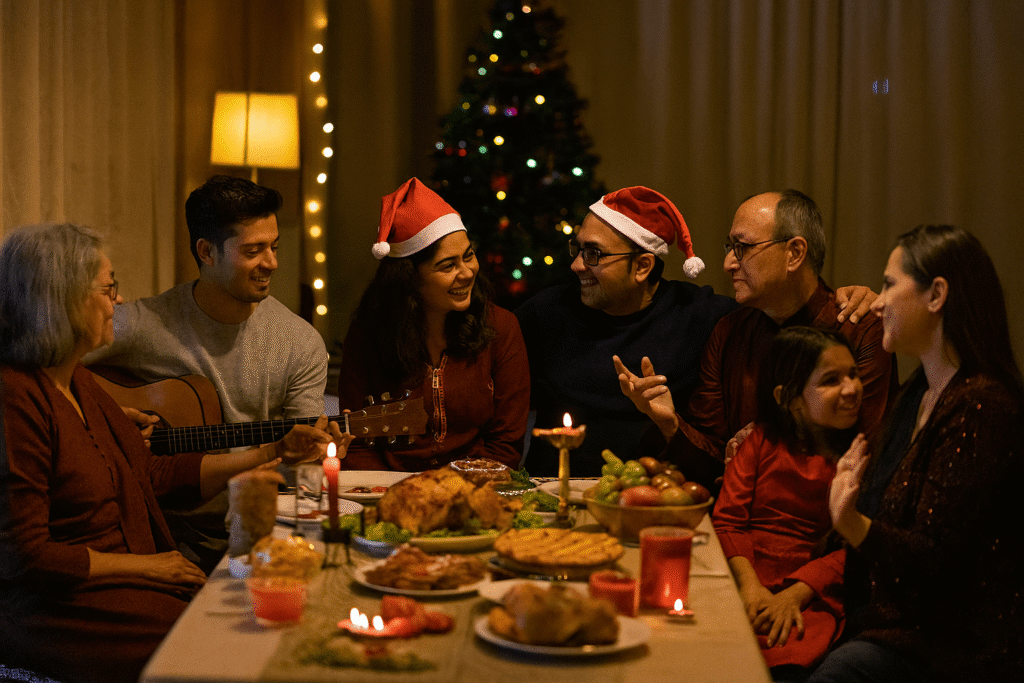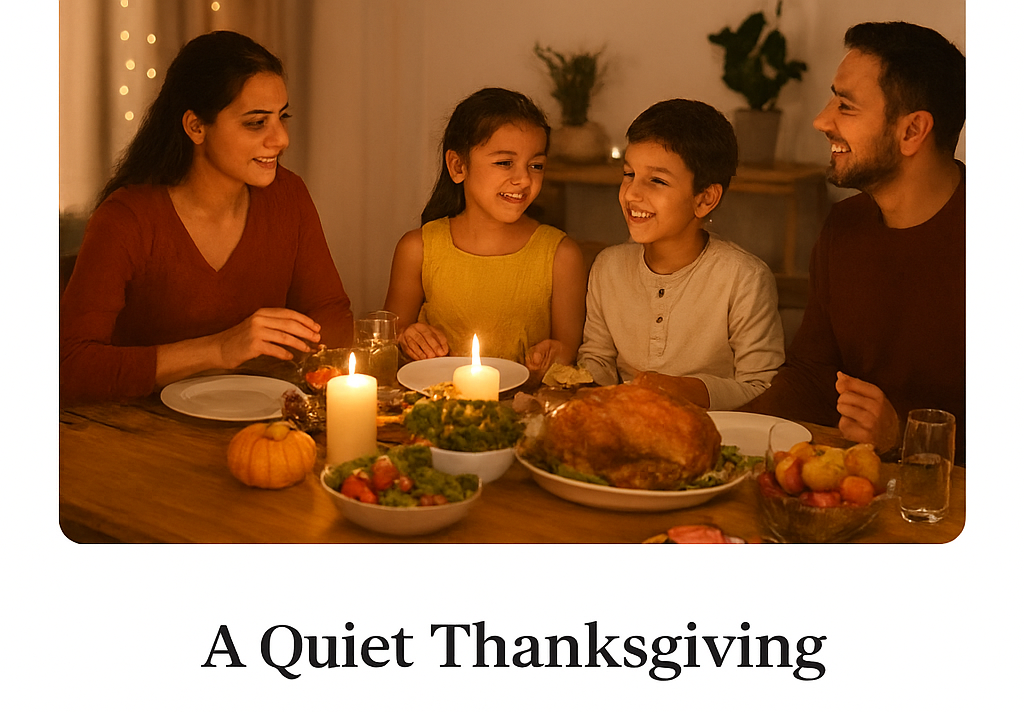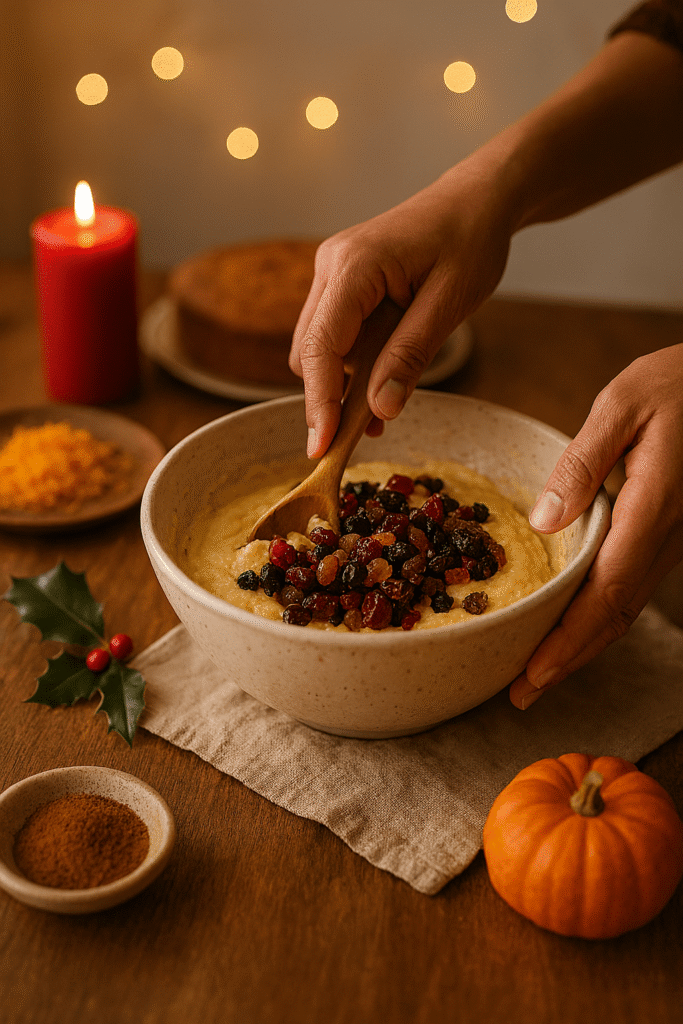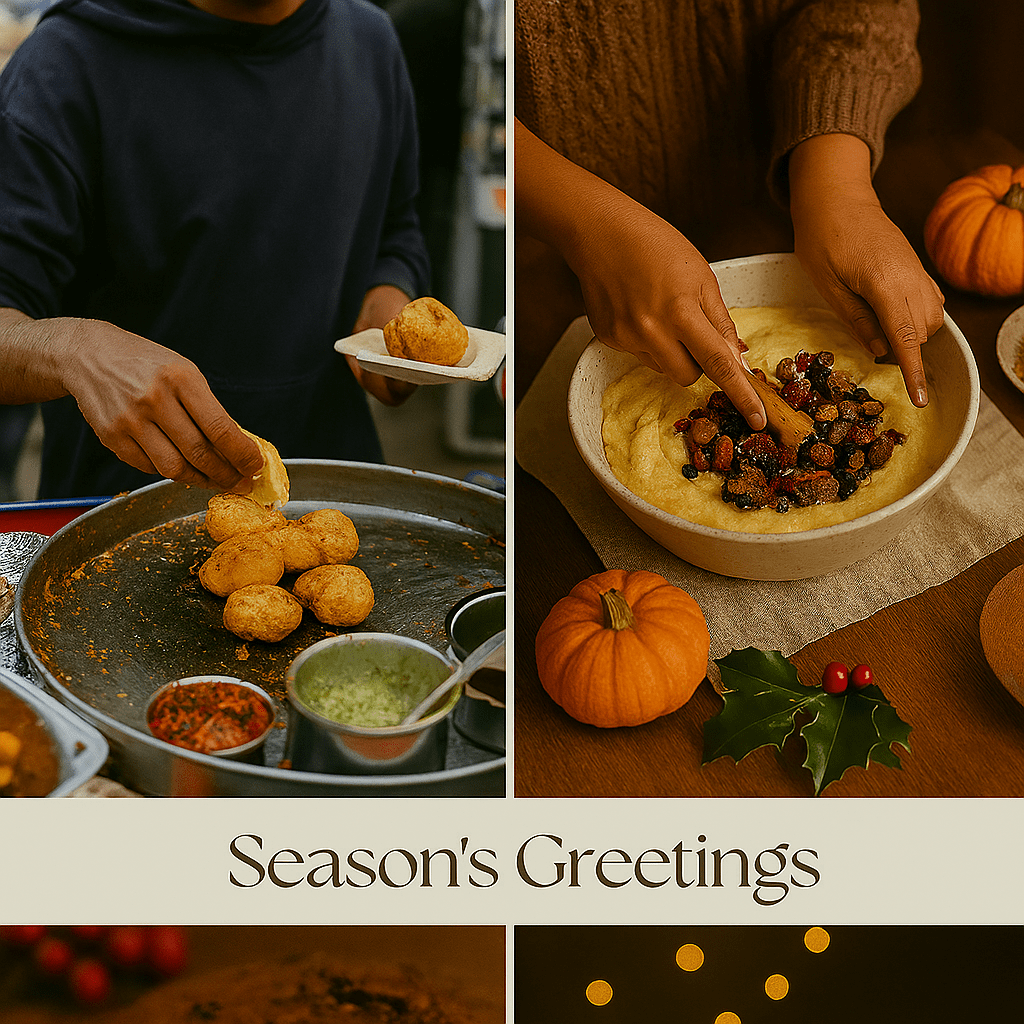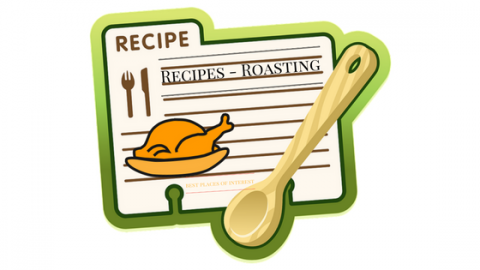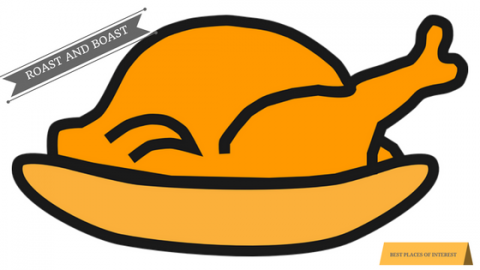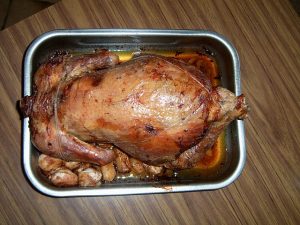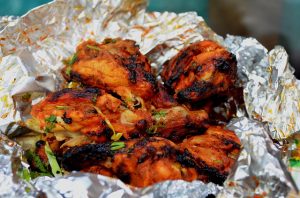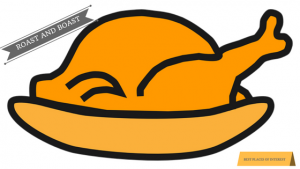It is a continuation to my earlier post on ‘Roast and boast‘. Following are 2 roasting recipes
Roast leg of lamb with onions and potatoes in white wine
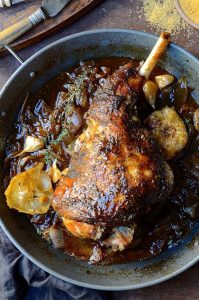
Image credit -Pinterest
Ingredients–
1 kg of mutton,
6 cloves garlic cut into slivers,
2 tbsp. olive oil,
1 tsp each salt and pepper,
1 tbsp. tenderon powder + 2 tbsp. tabasco sauce if you like it spicy.
3 each large potatoes and onions, peeled, halved and cut into thin slices rubbed with ½ tsp each salt, pepper, and thyme.
1 cup white wine, juice of 1 lemon and a few sprigs of thyme or rosemary.
Method:
Make a few cuts on the leg of mutton and insert a sliver of garlic into each slit reserving the remaining. Make a paste with salt, pepper and tenderon and olive oil and rub all over the leg. Cover and leave overnight. In a large, non-stick pan, brown the piece of leg on both sides to have a nice browned crust. Preheat the oven to 250c/ gas mark 9. Grease a large oval baking dish and line with the potatoes and remaining garlic slivers on the bottom of the dish too. Place the leg of mutton over this, arrange a few sprigs of thyme or rosemary around the meat and drizzle 1/ 2 the wine and lemon as well as some freshly cracked pepper all over and cover with foil and roast for 20 minutes. (If you like a little heat and spice, sprinkle some chilly flakes or add some tabasco to the initial paste.)
Reduce the heat to 200c/gas mark 6, pour the remaining wine and lemon juice and cook covered for the first hour and then uncovered for 45 minutes until well browned and done to your liking. Baste with the pan juices every 20 minutes during the cooking process to keep the meat moist. After you remove from the oven, let it rest for 10 minutes before carving.
Whole roast chicken with rosemary, garlic and lemon
Ingredients: 1 whole chicken (1.5- 1.8 kg),
2 tbsp. butter,
1 tbsp. garlic paste,
1 tsp each salt, pepper,
2 tbsp. fresh rosemary leaves chopped,
Rind of 2 lemons,
½ cup of whole garlic pods,
2 lemons,
Few sprigs of rosemary,
olive oil,
salt and pepper as required,
juice of 1 lemon.
Method:
Preheat oven to 200c/ gas mark 6. Wash and clean chicken and pat dry. Make a paste with the butter, garlic paste, salt, pepper, chopped rosemary and lemon rind. Loosen the skin and rub this mixture evenly all over.
Stuff the cavity of the chicken with the garlic pods, 2 lemons cut in half and a few sprigs of rosemary. Seal with tooth picks or metal skewers. Rub the chicken all over with some olive oil, salt and pepper and tie the chicken, folding the wings, behind. Grease an oven proof dish; sprinkle the remaining garlic pods and rosemary around the chicken, drizzle with juice of 1 lemon, cover with foil and bake for 40-45 minutes.
Reduce the oven to 180c/ gas mark 4. Baste with some more lemon juice or with the pan juices and bake uncovered for 20-25 minutes until done. Test by inserting a sharp knife into the thigh area and if the juices run clear, it is done.
Serve with mashed potatoes or roast potatoes.
